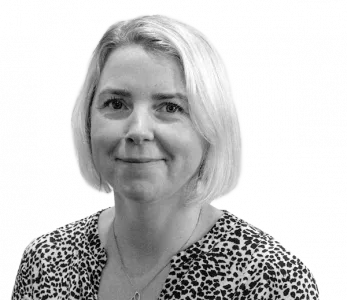In the spotlight with Howard Pullman
This month HSM puts the spotlight on Cority’s Howard Pullman to find out about the role software plays in health and safety and how we can make full use of the data.
How did you get into the health and safety industry?
I joined an HSE Training and Consultancy business (CHSS) in a sales role – and they put me through the NEBOSH General Certificate (first of the team to get a distinction – not that I like to boast!). Over the last 15 years I have seen what a difference all of us in HSE make – we want people to go to work and come home safely, and to make sure we look after the environment we work in. I know how important our and your work is.
What do you enjoy most about your job?
My colleagues and our clients, understanding what clients are aiming to really achieve and helping them achieve it. It requires knowledge, empathy and creativity. It is the best place I have ever worked. As a sales person I am a bit of an evangelist about Cority because I have never before worked for a company with such an overwhelming commitment to being the best for our customers, right up to Mark, our CEO.
What do you think are the biggest challenges facing the health and safety industry in the UK?
Visibility and control of risk. Many smaller organisations are just beginning the journey of digitising their health and safety management which will give them this visibility and control. Larger organisations have a similar challenge – because they have many legacy point solutions, which collect information, but in different formats and in silos. Those organisations are now looking for more integrated solutions.
How do you think these challenges can be overcome?
Ensuring there is a digital strategy agreed at the highest level. This should guide your decisions on each functional area to ensure you move forward in a coherent fashion to deliver consistent visibility and management of risk across functional areas.
Which technologies do you think will have the biggest impact on health and safety in the next few years and why?
Increasingly there is more and more data available to us – and it will only accelerate. Legacy data we have recorded, information from wearables, machines, external digital reference sources – the key will be to make sense of this data to actually make it usable and useful.
What is the best advice you could give health and safety professionals who are looking to implement EHS management software?
Build a stakeholder group to include IT, HSE, HR and an Exec Sponsor. Align your digital strategy with your organisational objectives. Prioritise – you can’t do everything at once: what is most important to your business? What will make your business safer? What will deliver most efficiencies, so your team can be advising/coaching/mentoring – and not administering? What existing systems would you be able to decommission? What is the business benefit? There will certainly be a bottom line return – find it.
What sets Cority apart from other EHS software providers?
The absolute commitment to customers – I know lots of companies may say this – I see it in action every day – and it informs everything we do. We are truly integrated – the benefits from sharing information between safety and occupational health, or occupational health and hygiene just transform its usefulness. On the technical front, being ‘true’ SaaS is important – all our customers are on the same core architecture so all benefit from the investment we make in product development.
What’s next for Cority?
There is a lot of focus at present on making data useful – so our Data Quality Score mechanism gives clients the knowledge of how much they can rely on the data they have captured. This then leads on to our work on predictive analytics. Many organisations still need work on lagging and leading indicators, but predictive is the future – we have a team of six working on it which includes four PHD qualified staff in things like Machine Learning and AI. And fatigue management through wearables information.If you have a welder, train driver or chemical process engineer for example – wouldn’t you want to know if they were truly fatigued even before they start work – so that you can support them and keep them safe?
What health and safety issues are you most passionate about?
I have seen the devastation amongst colleagues when something truly goes wrong.It drives me in what I do, and we do. Ensuring there is visibility – and understanding – of what went wrong, of what audits or inspections have identified needs fixing – and that it gets done – these are just fundamental. Personally, I love wellbeing. We help measure the impact of wellbeing initiatives – and if you can measure it – you can demonstrate the ROI – and do more. So it is a virtuous circle – do initiative, improve wellbeing, reduce absence. Like all of Safety and Health – better to be proactive and prevent rather than remedy.
Howard Pullman is regional business development manager at Cority. For more information, visit www.cority.com
HSM's next free webinar takes place on 1 May 2019 at 10:30am and is titled Workplace Wellness: Health Beyond Traditional Hazards.
This webinar is sponsored by Cority and will feature a panel including IOSH Vice President Jonathan Hughes, Cority Regional Business Development Director Howard Pullman and HSM content director Mark Sennett.
HSM publishes a weekly eNewsletter, delivering a carefully chosen selection of the latest stories straight to your inbox.
Subscribe here



